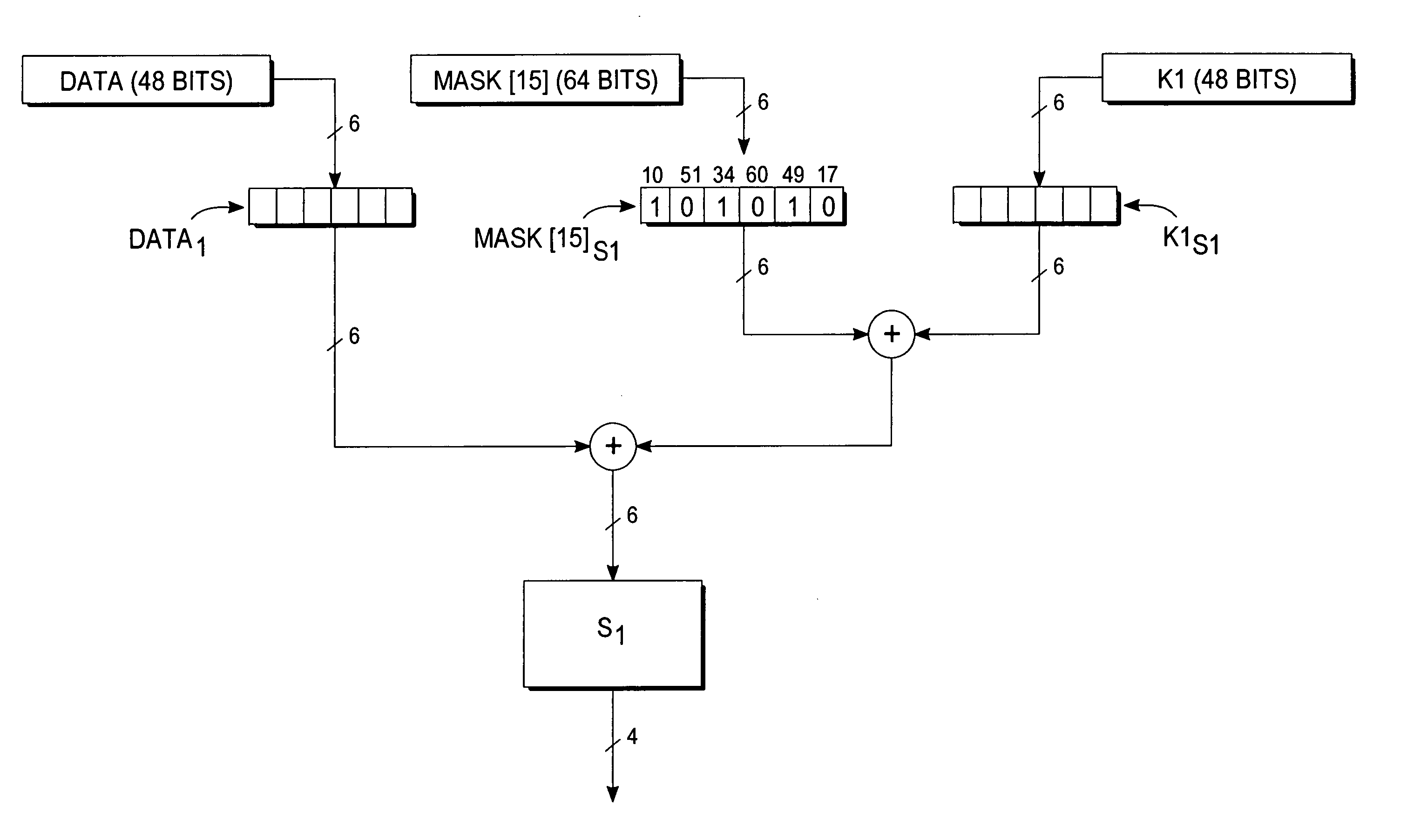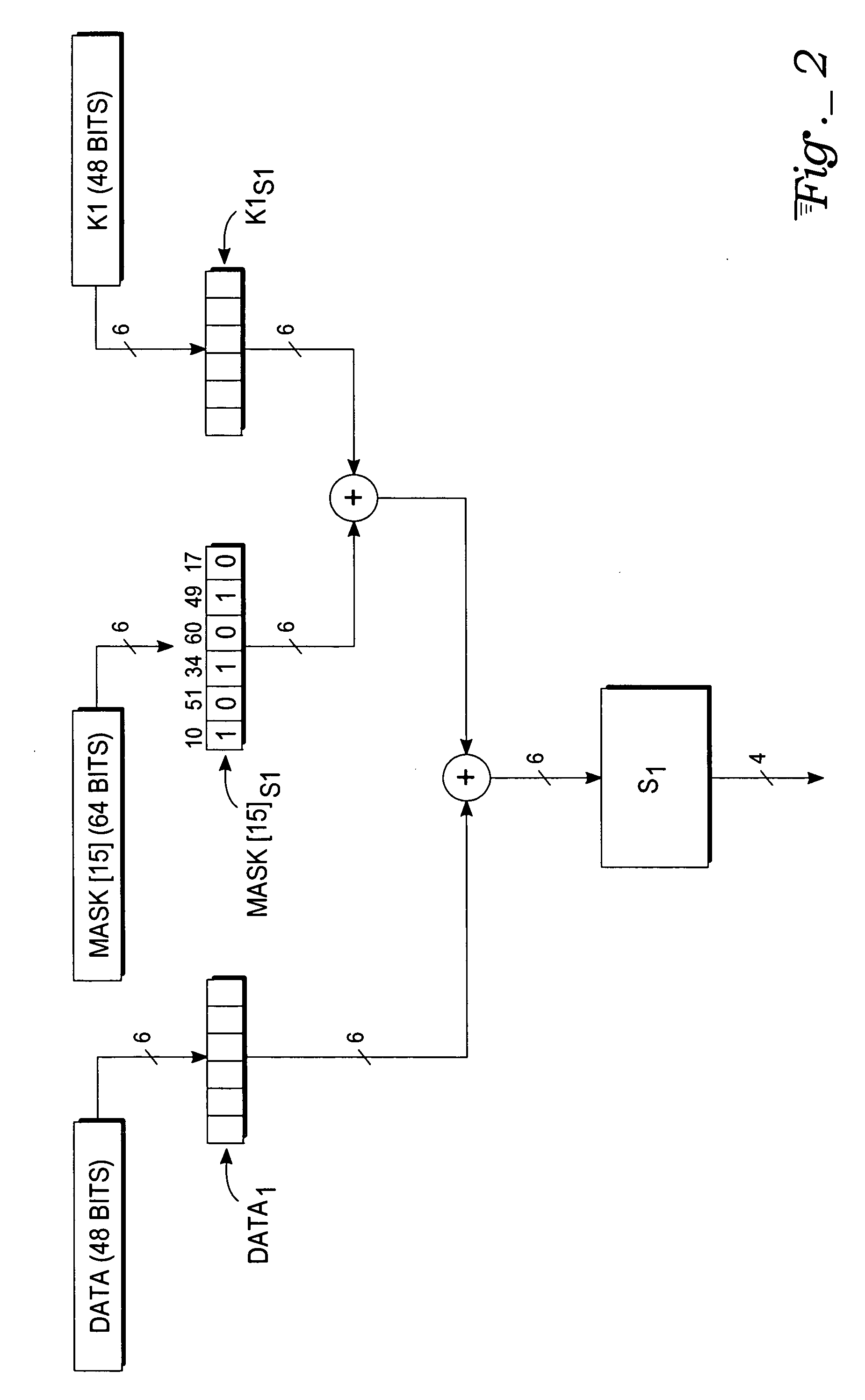Encryption protection method
a technology of encryption protection and cryptographic hardware, applied in the direction of encryption apparatuses with shift registers/memories, digital transmission, secret communication, etc., can solve the problem that s-boxes in des are potentially vulnerable to differential analysis
- Summary
- Abstract
- Description
- Claims
- Application Information
AI Technical Summary
Benefits of technology
Problems solved by technology
Method used
Image
Examples
Embodiment Construction
[0014] Deterministic blinding may be applied in accord with the present invention as either a “global” masking method or an “inside” masking method. The basic idea is to apply each of the lines of a masking table to a key or round subkeys to obtain true and dummy keys or subkeys. In the global masking method, masking with the lines of the masking table is applied to the overall cipher key outside of the execution of the rounds of the cipher algorithm. This allows us to keep the existing hardware or software implementation of the cipher algorithm itself without any internal modification. Global masking generates a true cipher key and a set of dummy cipher keys. These cipher keys are then applied successively in some random order to a message block in multiple loops of the cipher algorithm. Hence, an implementation of the global masking method may process a loop of 64 operations of the cipher algorithm. Within each loop one can use table random access to pick at random an index i that...
PUM
 Login to View More
Login to View More Abstract
Description
Claims
Application Information
 Login to View More
Login to View More - R&D
- Intellectual Property
- Life Sciences
- Materials
- Tech Scout
- Unparalleled Data Quality
- Higher Quality Content
- 60% Fewer Hallucinations
Browse by: Latest US Patents, China's latest patents, Technical Efficacy Thesaurus, Application Domain, Technology Topic, Popular Technical Reports.
© 2025 PatSnap. All rights reserved.Legal|Privacy policy|Modern Slavery Act Transparency Statement|Sitemap|About US| Contact US: help@patsnap.com



